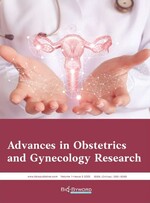Abstract
Objective: To investigate the expression and significance of fatty acid binding protein 4 (FABP4) and microRNA-182 (miRNA-182) in the plasma and placental tissues of patients with hypertensive disorders in pregnancy (HDIP). Methods: 141 mothers admitted to The Affiliated Hospital of Hebei University between January 2019 and December 2022 were selected. The patients were divided into the observation group (61 HDIP patients) and control group (80 healthy pregnant women) based on the criteria for determining hypertensive diseases in pregnancy. The differences in the expression of FABP4 and miRNA-182 between the two groups were compared. Results: The expression levels of FABP4 in plasma and placental tissues of the observation group were significantly higher than those of the control group (P< 0.05). Conversely, the expression levels of miRNA-182 in the plasma and placental tissues of the observation group were significantly lower than those of the control group (P < 0.05). A negative correlation was observed between the plasma level of FABP4 and miRNA-182. However, there was no significant correlation between the expression levels of FABP4 and miRNA-182 in placental tissues. While plasma FABP4 levels exhibited a positive correlation with the severity of HDIP, miRNA-182 expression levels did not significantly correlate with the severity of HDIP. Conclusion: The expression of FABP4 and miRNA-182 in plasma and placental tissues of patients with HDIP differed significantly from that of healthy pregnant women. This observation may provide a new perspective on the pathogenesis of HDIP.
References
Wang Q, Zhao C, Yuan F, 2023, Expression and Significance of BTP MCP-1 and FABP4 in Patients with Hypertensive Disorders in Pregnancy. China Maternal and Child Health, 38(18): 3573–3576.
An H, Wu Y, Hao Y, 2023, Relationship Between Changes in Peripheral Blood miR-206 and miR-483 Levels and Pregnancy Outcome in Patients with Hypertensive Disorders in Pregnancy. Modern Medicine, 51(7): 923–928.
Wu L, Sun J, Xie H, 2023, Value of Serum PLGF, SFLT-1 and LDH, UA in Hypertensive Disorders in Pregnancy. Laboratory Medicine and Clinics, 2023: 1–8.
Li W, 2022, Clinical Value of Combined Detection of Serum Hcy, hs-CRP, and D-dimer Levels for Diagnosis of Hypertension During Pregnancy. Clinical Research, 30(12): 113–116.
Wang Y, Chen X, Zheng X, et al., 2022, Serum NT-proBNP, LDH, and UA levels in 229 Patients with Hypertensive Disorders in Pregnancy and Their Effects on Pregnancy Outcome. Medical Theory and Practice, 35(22): 3874–3877.
Jiang H, Zhang G, Cao S, 2022, Changes in Serum sVEGFR-1, PAF, and PLT Levels and Their Clinical Significance in Patients with Hypertensive Disorders in Pregnancy. Shandong Medicine, 62(31): 68–71.
Ying G, Zhang Q, 2022, Changes of Serum ET-1, NO, CysC Levels, and Renal Function Indexes in Patients with Different Degrees of Hypertensive Disorders in Pregnancy. Chinese Journal of Family Planning, 30(9): 2107–2110.
Zhang Y, Wang S, Lei L, 2022, Effect of Low-Dose Aspirin Combined with Nifedipine and Labetalol in the Treatment of Hypertension During Pregnancy and Its Effect on the Expression Levels of miR-181b and miR-210. Clinical Medicine Research and Practice, 7(25): 79–82.
Wang X, Chen L, Tang W, et al., 2022, Expression Levels and Clinical Significance of Serum miR-15b and Zeste Homolog Enhancer-2 in Hypertensive Patients During Pregnancy. Journal of Clinical Military Medicine, 50(8): 834–835 + 838.
Zhou L, Meng W, 2022, Relationship Between Remote Fetal Heart Monitoring, Serum UA and CRP Levels and Severity of Prenatal Disease and Neonatal Outcome in Pregnant Women with Gestational Hypertension. Chinese Journal of Family Planning, 30(8): 1860–1863 + 1868.
Dong Y, Zhao Y, 2022, Correlation Analysis of Serum EGF and NT Expression with Preeclampsia in Hypertensive Patients During Pregnancy. Gansu Science Journal, 34(3): 49–53.
Guo J, 2022, Correlation Between MTHFR Gene Polymorphism and Hcy in Early Pregnancy and Hypertension in Pregnancy, thesis, Kunming Medical University.
Bao T, Xue J, Wang J, 2022, Correlation Analysis of Homocysteine and ET-1 Levels with Early Myocardial Impairment in Hypertensive Patients During Pregnancy. International Journal of Laboratory Medicine, 43(5): 549–553.
Yu J, Zhao L, Zhang X, 2022, Correlation of Renal Injury with Urinary NGAL and LIM-1 in Hypertensive Disorders in Pregnancy and Its Effect on Pregnancy Outcome. China Maternal and Child Health, 37(3): 427–430.
Liu L, Liu J, 2022, Expression of HLA-? and miR-95-5p in Hypertensive Patients During Pregnancy and Correlation with Adverse Maternal and Infant Outcomes. Chinese Journal of Family Planning, 30(1): 172–176.
Qi R, Jian L, 2022, Study on the Relationship Between Plasma microRNA-126 Levels in Hypertensive Disorders in Pregnancy and the Distribution of Symptoms and Body Mass in Traditional Chinese Medicine. Sichuan Traditional Chinese Medicine, 40(1): 69–73.
Su X, Lv X, 2022, Clinical Effect of Labetalol Combined with Magnesium Sulfate in the Treatment of Severe Gestational Hypertension and Its Effect on Patients’ Serum LIF, Apelin and Hcy Levels. Clinical Medicine Research and Practice, 7(2): 120–123.
Chen K, Wu D, Yin Z, 2021, Therapeutic Effect of Phentolamine Combined with Nifedipine on Patients with Gestational Hypertension and the Effect on Serum VEGF VCAM-1 Levels. China Maternal and Child Health Care, 36(23): 5382–5386.
Ding F, Zhang X, Li H, et al., 2021, Predictive Value of sFlt-1, ET-1, and MFG-E8 Levels on Renal Impairment in Hypertensive Disorders in Pregnancy. China Sick Case, 22(11): 109–112.
Yan X, Kong F, Wang A, et al., 2021, Factors Influencing the Prevalence of 6579 Pregnant Women with Hypertensive Disorders in Pregnancy and the Occurrence of Critical Conditions. Journal of Central South University (Medical Edition), 46(8): 814–821.
